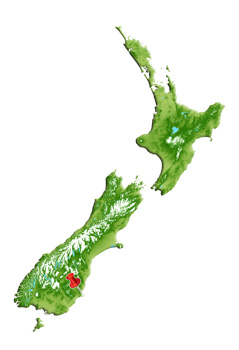Orokonui EcoSanctuary
 Vision
Vision
A healthy, self-sustaining ecosystem, free of all introduced mammals and comprising indigenous species that are appropriate to the Orokonui site, where people can enjoy a peaceful encounter with nature, and from which they may take recreation, refreshment, new knowledge, new skills and a new commitment to conservation.
Location
Orokonui Valley at Waitati, Dunedin; 20 km north of central Dunedin city.
Area
300 hectares (230 conservation land; 70 ha private land).
Organisations involved
Otago Natural History Trust (charitable trust with 6 trustees and 600 members).
Management history
The Orokonui Valley was cleared for farming in the 19th century but has been left to regenerate for the past 100 years. The majority of the forest cover is kanuka, with some small pockets of remnant podocarps (approx 300 years old). Mixed podocarp-broadleaved forest is emerging in places. A stand of Eucalyptus regnans at the bottom of the valley has spread from an earlier shelter belt. One of the eucalypts is reputedly New Zealand’s tallest tree, recently measured at 77 metres.
The Orokonui Valley was home to the Orokonui psychiatric hospital, which occupied the site until the early 1980s. The use of the Orokonui Stream as the water supply for the hospital assured the protection of the forest. When the hospital closed, the forested part of the valley became the responsibility of the Department of Lands and Survey and subsequently the Department of Conservation. . The DoC land has been gazetted as Nature Reserve, and authority to control and manage it has beeen vested in the Otago Natural History Trust.
A 9 km pest-exclusion fence was completed in 2007, and subsequently pest eradication has cleared the sanctuary of all introduced mammals apart from infrequent tiny pockets of mice reappearance.
Habitat restoration has included the felling of over 3000 wildling pines, clearance of several hectares of gorse and broom, planting of over 3000 native trees, shrubs, grasses, sedges and ferns, and construction of several ponds. Species reintroduced to the ecosanctuary to date (April 2009) are South Island kaka, jewelled gecko, tuatara (at present held in a tuatarium), and tieke (South Island saddleback). Further releases are planned for later in 2009.
Completed facilities include an administration/storage block, two large aviaries, a lizard hospital, and several high quality paths and tracks.
The ecosanctuary has three full-time employees, and some 400 volunteers put in 800-900 hours a month of assistance with administration, construction and maintenance of infrastructure, and restoration work.
Access
The ecosanctuary is closed to the public apart from pre-booked guided tours (see www.orokonui.org.nz for details). It will fully open in September 2009 upon completion of the visitor centre. The main public access will be off Blueskin Road, at its highest point between Waitati and Port Chalmers. Entry fees are charged to assist the Trust to meet operating costs.
